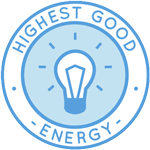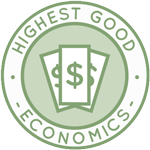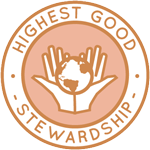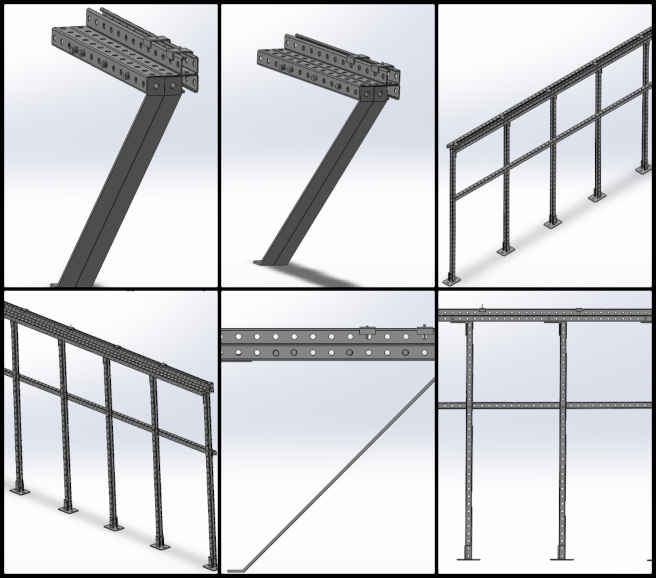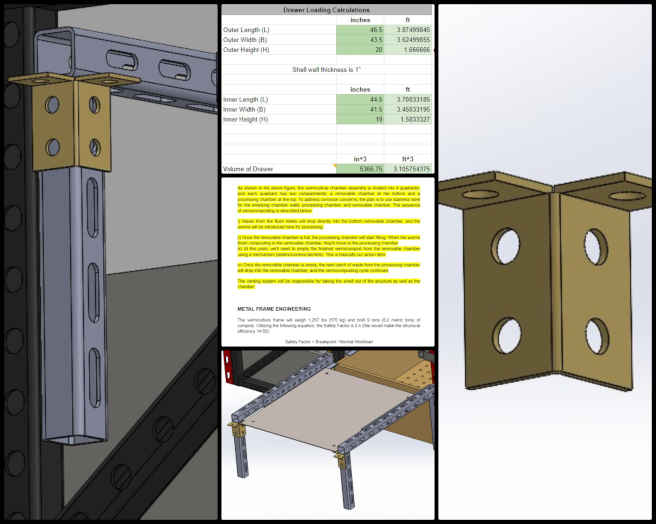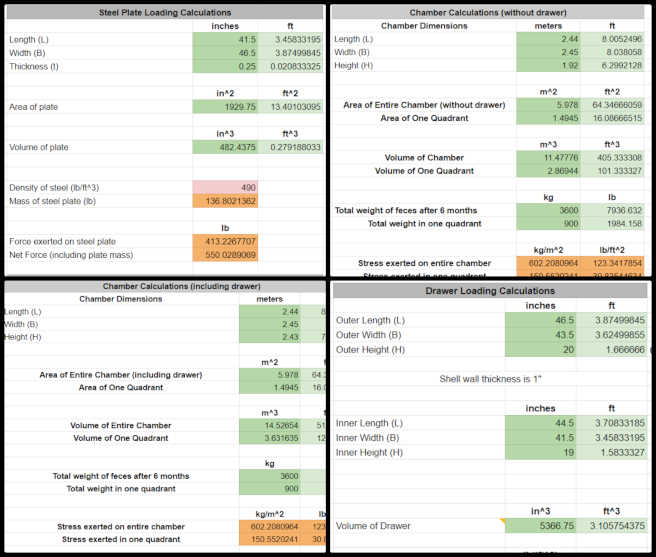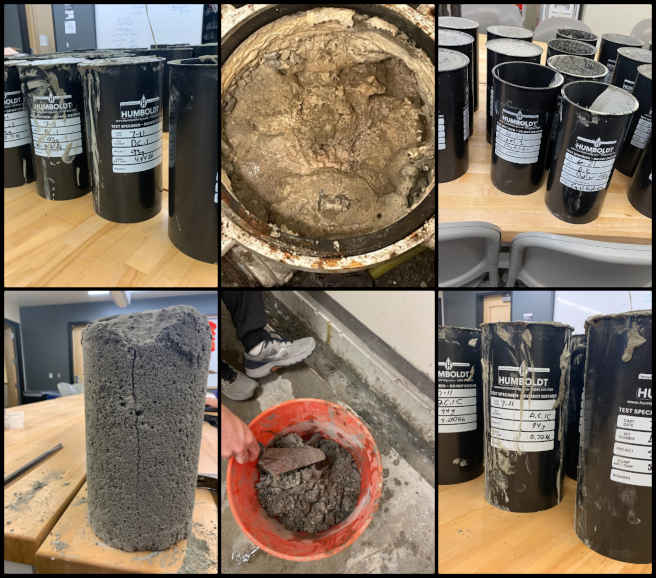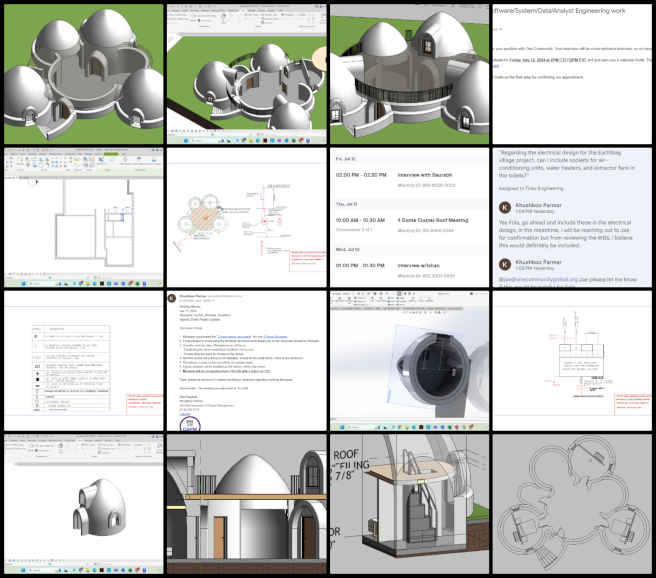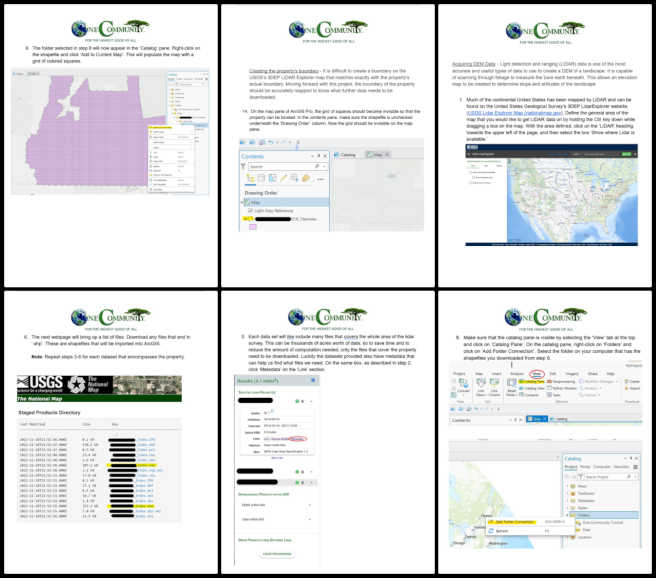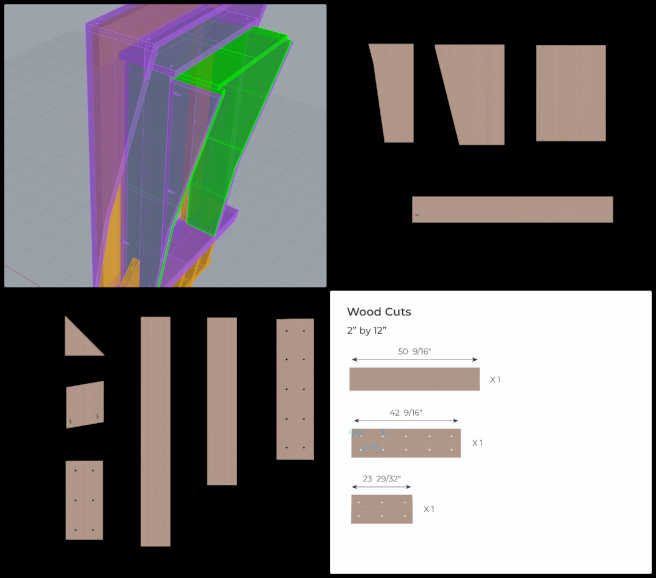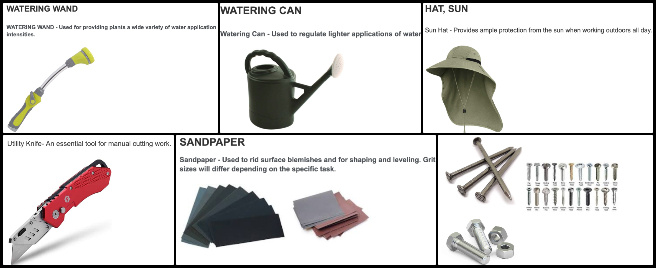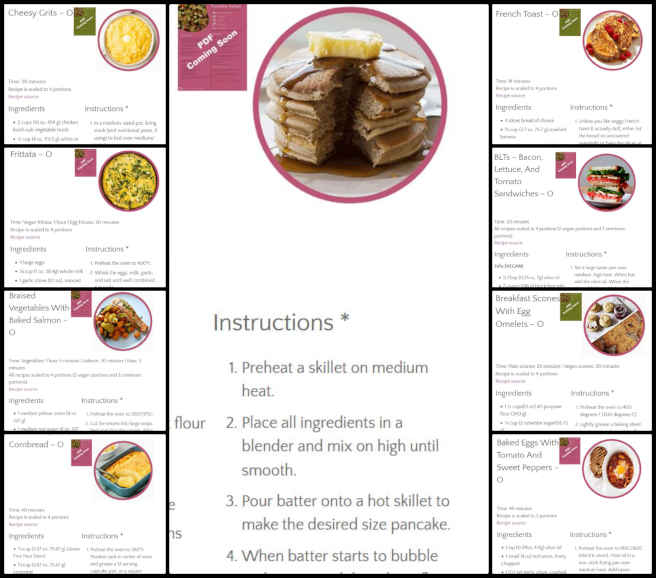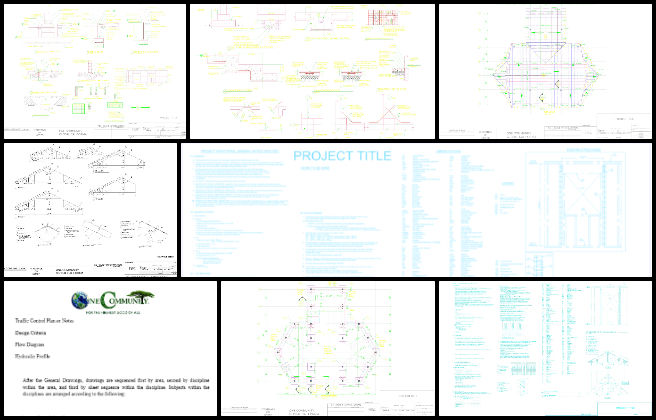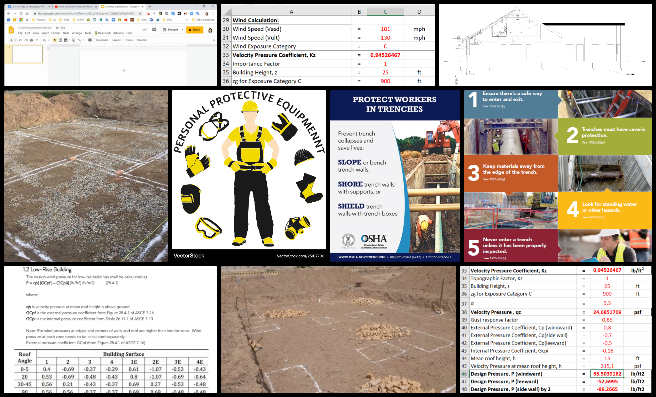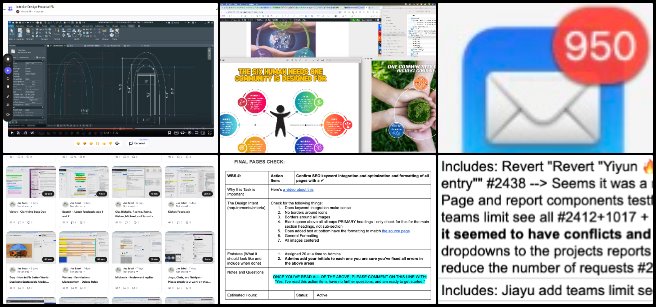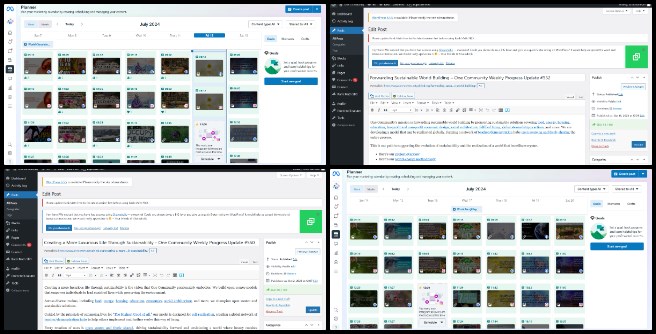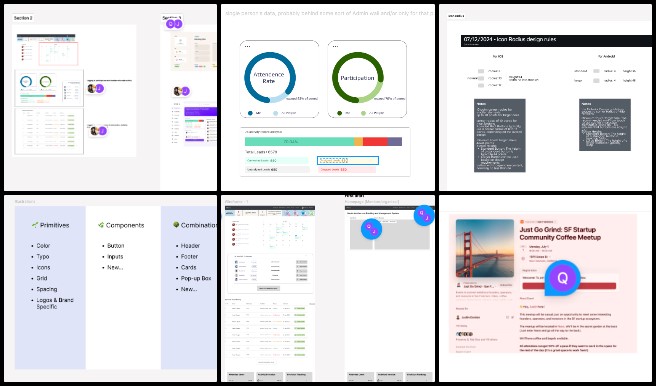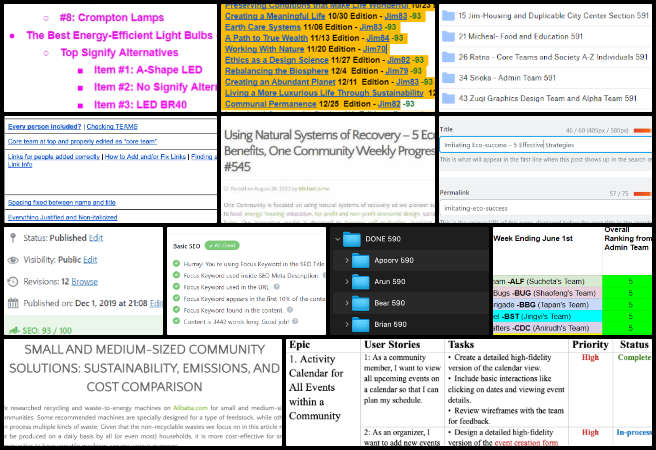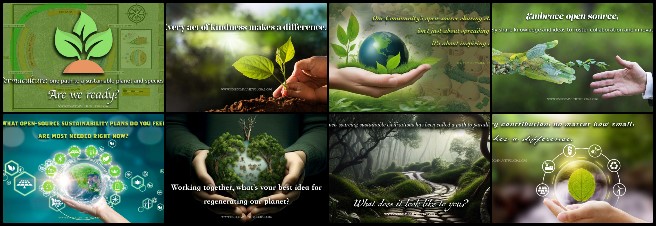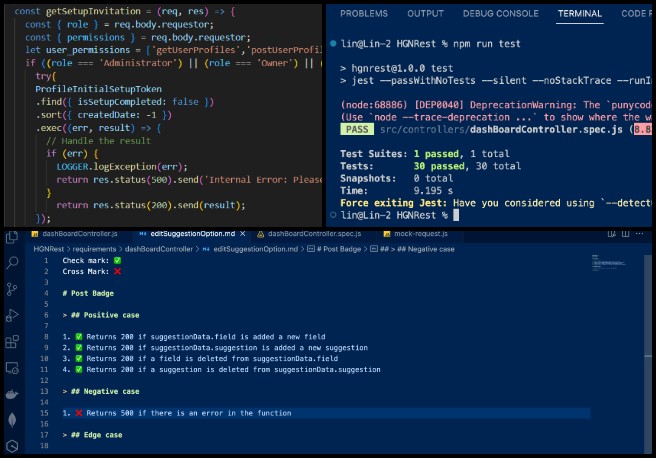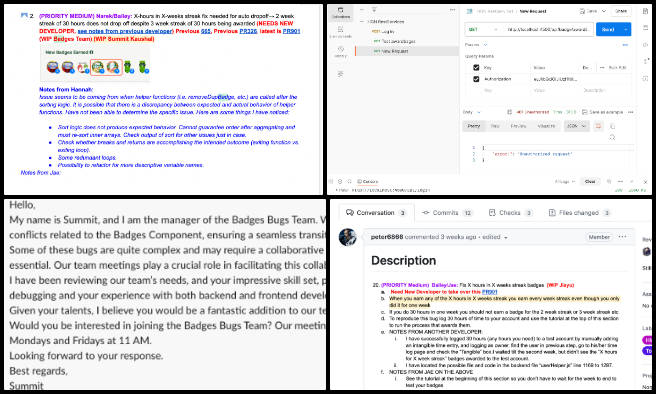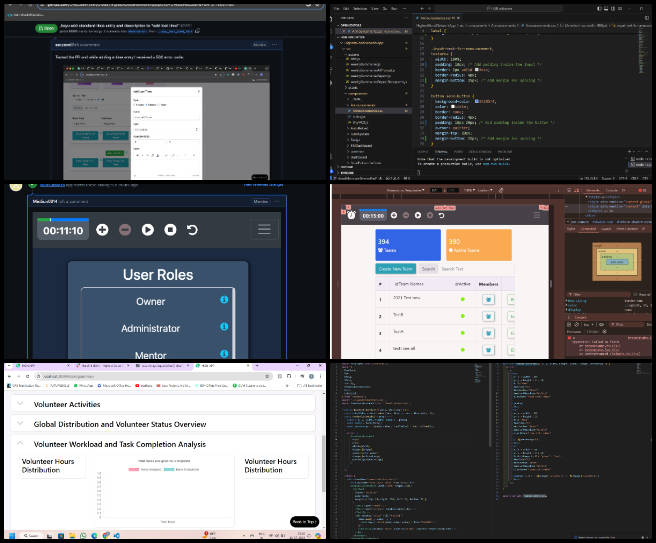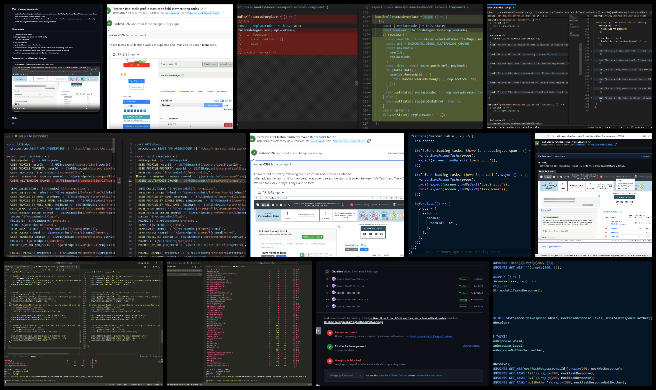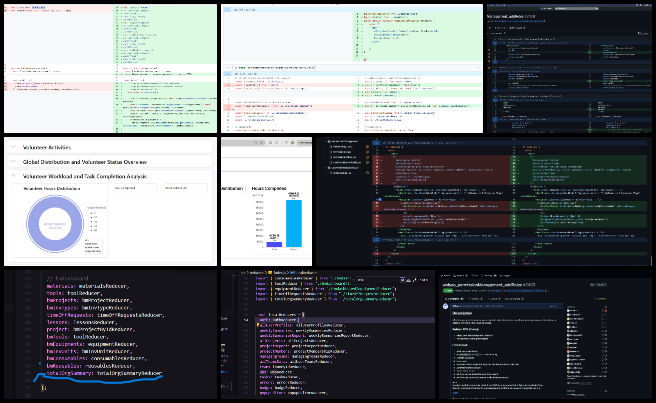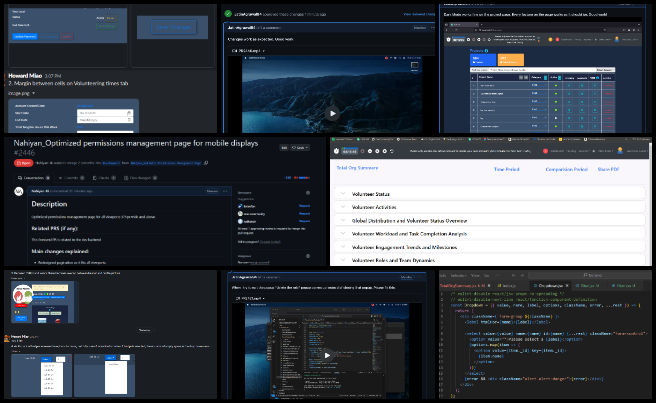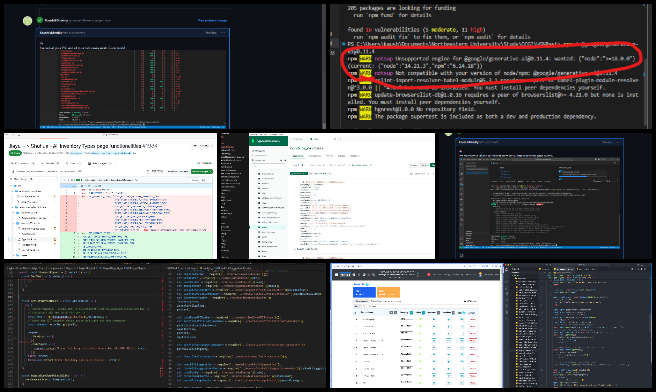Holistic Human Support Webs – One Community Weekly Progress Update #591
At One Community, we believe in creating holistic human support webs to address global challenges. Our all-volunteer organization is dedicated to evolving sustainability through open sourcing and free sharing our complete process. From sustainable approaches to food, energy, housing, education, to innovative economic and social architecture models, we aim to regenerate our planet. Our work is designed to be self-replicating, enabling the creation of global collaboration teacher/demonstration hubs. By doing this for “The Highest Good of All,” we are committed to creating a world that works for everyone.
- Here’s our project overview
- Here’s our world-change methodology
- Here’s how this becomes self-replicating
- Here’s how we are open source and free-sharing all the do-it-yourself designs
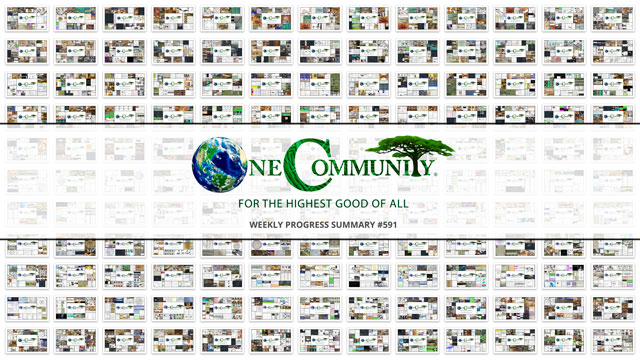
OUR MAIN OPEN SOURCE HUBS
Click on each icon to be taken to the corresponding Highest Good hub page.
One Community’s physical location will forward this movement as the first of many self-replicating teacher/demonstration communities, villages, and cities to be built around the world. This is the July 15th, 2024 edition (#591) of our weekly progress update detailing our team’s development and accomplishments:
Holistic Human Support Webs
One Community Progress Update #591
DONATE | COLLABORATE | HELP WITH LARGE-SCALE FUNDING
CLICK HERE IF YOU’D LIKE TO RECEIVE AN EMAIL EACH WEEK WHEN WE RELEASE A NEW UPDATE
YOU CAN ALSO JOIN US THROUGH SOCIAL MEDIA
ONE COMMUNITY WEEKLY UPDATE DETAILS
HIGHEST GOOD HOUSING PROGRESS
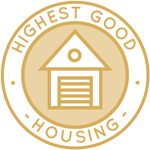 One Community is developing holistic human support webs through Highest Good housing that is artistic and beautiful, more affordable, more space efficient, lasts longer, DIY buildable, and constructed with healthy and sustainable materials:
One Community is developing holistic human support webs through Highest Good housing that is artistic and beautiful, more affordable, more space efficient, lasts longer, DIY buildable, and constructed with healthy and sustainable materials:
- Learn about: Our Upcoming Crowdfunding Campaign
- Learn about the different village models that are foundation of these holistic human support webs: 7 Sustainable Village Models
- Visit the open source portals for the first two of these holistic human support webs: Earthbag Village OS Hub | Straw Bale Village OS Hub
This week, Joseph Osayande (Mechanical Engineer) continued helping finish the Vermiculture Toilet designs. The standing system assembly was developed further with the connector channel. Unistruts with brackets were added, and bolts were distributed along the strut to ensure balance and manage the weight effectively throughout the structure. Two separate designs were created, and a decision will be made next week on which design has the most potential. Selecting the right model is imperative for the project’s success. The vermiculture toilets and other sustainable human waste processing technologies form the basis of One Community’s open source model for holistic human support webs. See below for some of the pictures related to this work.
Rizwan Syed (Mechanical Engineer) also continued helping finish the Vermiculture Toilet designs. This week, Rizwan summarized the team’s design and stress analysis activities from the past three months to update the vermiculture eco-toilet design content on One Community’s website. Rizwan updated design criteria and metal frame engineering sections, incorporating the latest calculations. He researched unistrut wing connectors for pillar support and created custom 3D models in SOLIDWORKS to check assembly fit. He also verified hand calculations for the removable drawer with the engineering team. These efforts support One Community’s open-source sustainable waste processing model. Here are a few photos showing examples of his work.
Yagyansh Maheshwari (Mechanical Engineer) started his work with Earthbag Village designs. This week, Yagyansh searched for options of wheels that can be used in the drawer and finalized a few options after reviewing their specifications. He also reviewed the mechanism for disposing of compost on the ground, ensuring that the selected wheels and mechanism meet the necessary requirements for effective operation. The Earthbag Village is the first of 7 to be built as the housing component of One Community’s open source model for holistic human support webs. See some of this work in the collage below.
AIRCRETE TEAM
The Aircrete Testing Team’s summary, covering their work on Aircrete Compression Testing was managed by John Sullivan (CBU Chemical Engineering Student) and includes Jonathan Crago (Civil Engineering Student) and Preston Thompson (Civil Engineering Student). This week, Jonathan and his team advanced Domegaia aircrete testing, developing new test cylinders and troubleshooting a clogged drain by relocating equipment outside. They established a new production area, optimized workflows, and explored increasing cement content for stability. Despite delays, they conducted compression tests to refine their method, contributing to One Community’s open-source housing model. See below for some of the pictures related to this work.
EARTHBAG VILLAGE 4-DOME HOME TEAM
The Earthbag Village 4-dome Home Team was managed by Khushboo Parmar (Project Manager) and includes Michaela Silva (Architect), Adefola Madehin (Electrical Design Specialist), and Karthik Pillai (Volunteer Mechanical Engineer). Karthik focused on learning Revit and key architectural concepts for future contributions. Michaela finalized the loft stair design with storage and integrated all windows, doors, and arches into the Revit model. Fola completed lighting and socket circuit lettering for the Earthbag 4 Dome Village, finished the distribution panel schematic per NEC standards, and prepared for the electrical load schedule.
Khushboo prepared for and interviewed two software developers on separate days, offering them volunteer positions with the organization. She also led a team meeting with the lead architect to address blockers and created a Dropbox folder for the engineers to access project files. Khushboo maintained communication with all team members to provide support and answer questions. The Earthbag village forms the basis of One Community’s open source model for holistic human support webs. See their work in the collage below.
DUPLICABLE CITY CENTER PROGRESS
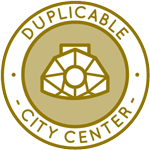 One Community is developing holistic human support webs through a Duplicable and Sustainable City Center that is LEED Platinum certified/Sustainable, can feed 200 people at a time, provide laundry for over 300 people, is beautiful, spacious, and saves resources, money, and space:
One Community is developing holistic human support webs through a Duplicable and Sustainable City Center that is LEED Platinum certified/Sustainable, can feed 200 people at a time, provide laundry for over 300 people, is beautiful, spacious, and saves resources, money, and space:
- Learn about this building and it’s function within holistic human support webs: Duplicable City Center Open Source Hub
This week, Chris Blair (GIS Technician/Horticulturist) continued working with GIS data as part of One Community’s Permaculture Design. Chris began developing a written tutorial for utilizing GIS data. He produced the initial draft detailing steps to locate digital elevation models (DEMs) based on property location, import them into ArcGIS Pro, verify and adjust coordinate systems, and create a polygon feature class to represent the property. Proper property modeling and understanding is a foundational part of One Community’s open source model for holistic human support webs. Here are a few photos showing examples of his work.
Clarice Gaw Gonzalo (Architect) continued her work with the Duplicable City Center room designs. Clarice edited previous renders of several themed rooms and focused on the Nautical-themed room. She began by fixing the candles on the wall in the Tranquility room in SketchUp before uploading them again to Lumion to render the previous view again. Additionally, she rendered the Nautical room, adding people and clutter, and further populated the bedroom and bathroom with people and objects. She also adjusted the sun pathing and lighting for each view. The City Center will be built along with the first of the 7 villages as part of One Community’s open source model for holistic human support webs. See some of this below.
Nika Gavran (Industrial Designer) continued her work on the Duplicable City Center dormer window installation plans. This week, Nika focused on moving forward with the dormer window assembly instructions, concentrating on increasing the stability of the structure through the implementation of final screws and fasteners. She initiated renders for the final document, having a more finalized version of all the wood cuts. Additionally, she began working on the composition of the final document, inputting dimensions for the wood cuts. The Duplicable City Center is a foundational part of One Community’s open source holistic human support webs model. See below for some of the pictures related to this work.
HIGHEST GOOD FOOD PROGRESS
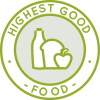 One Community is developing holistic human support webs through Highest Good food that is more diverse, more nutritious, locally grown and sustainable, and part of our open source botanical garden model to support and share bio-diversity:
One Community is developing holistic human support webs through Highest Good food that is more diverse, more nutritious, locally grown and sustainable, and part of our open source botanical garden model to support and share bio-diversity:
- Learn about the structures within the holistic human support webs for food: Hoop House Hub | Aquapini & Walipini Open Source Hub
- See what we’ll be growing: Gardens & Hoop Houses | Large-scale Structures | Food Forest | TA
This week, the core team continued updating and expanding the Highest Good Food tools, equipment, materials, and supplies document by adding new items and categorizing tools and equipment into powered and non-powered. This ongoing research aims to establish a list of tools for all One Community projects. The project also involves separating specific tools from the master list to create detailed inventories for individual One Community projects. Highest Good Food is an important part of holistic human support webs with One Community’s open source plans. See their work in the collage below.
Charles Gooley (Web Designer) focused this week on the Transition Food Self-sufficiency Plan and completed the replacement of placeholder images for recipe pages, with the exception of one vegan pasta image awaiting provision. His then shifted to correcting anchor links on the Tools and Equipment for Open Source Construction master page to ensure proper display in the address bar. This work will continue into the next week. Additionally, an image on the Foundations of Fulfillment page was linked to a larger view of the same image. Sustainable food and housing are an important part of creating holistic human support webs with One Community’s open source plans. See his work in the collage below.
Hayley Rosario (Sustainability Research Assistant) continued to update the Highest Good Food page, focusing primarily on the “Garden Establishment and No-Till” section. Her tasks include drafting the Highest Good Food page, completing the implementation details for the 20-person section, and beginning to focus on the 50-person section. For the 20-person section, she attached links to plants, formatted the content, and reviewed the information. Highest Good Food is an important part of holistic human support webs with One Community’s open source plans. See her work in the collage below.
HIGHEST GOOD EDUCATION PROGRESS
 One Community is developing holistic human support webs through Highest Good education that is for all ages, applicable in any environment, adaptable to individual needs, far exceeds traditional education standards, and more fun for both the teachers and the students. This component of One Community is about 95% complete with only the Open Source School Licensing and Ultimate Classroom construction and assembly details remaining to be finished. With over a decade of work invested in the process, the sections below are all complete until we move onto the property and continue the development and open sourcing process with teachers and students – a development process that is built directly into the structure of the education program and everything else we’re creating too:
One Community is developing holistic human support webs through Highest Good education that is for all ages, applicable in any environment, adaptable to individual needs, far exceeds traditional education standards, and more fun for both the teachers and the students. This component of One Community is about 95% complete with only the Open Source School Licensing and Ultimate Classroom construction and assembly details remaining to be finished. With over a decade of work invested in the process, the sections below are all complete until we move onto the property and continue the development and open sourcing process with teachers and students – a development process that is built directly into the structure of the education program and everything else we’re creating too:
This week, Apoorv Pandey (Mechanical Engineer) continued helping with the engineering details for The Ultimate Classroom part of the Highest Good Education component. He completed the AutoCAD cover page according to the City of San Diego’s CADD standards cover sheet guidelines. Apoorv plans to update the title block to align with the new standards outlined in a separate document. He has progressed with the STAAD Pro roof and truss calculation presentation and aims to complete the report. The One Community model of combining forward-thinking education with sustainably built classrooms like this is an excellent example of holistic human support webs. See the collage below for their work.
Brian Mwoyowatidi (Graduate Structural Engineer) continued helping with the engineering details for The Ultimate Classroom part of the Highest Good Education component. He focused on the Wind Load Analysis for the Ultimate Classroom, examining the loads affecting the footer and foundation system. He used Microsoft Excel to document calculations and relevant resources for this analysis. Brian also contributed to the tutorial for constructing the Ultimate Classroom, addressing topics such as construction methodology, PPE, site demarcation, and trench safety. The One Community model of combining forward-thinking education with sustainably built classrooms like this is an excellent example of holistic human support webs. See the collage below for their work.
HIGHEST GOOD SOCIETY PROGRESS
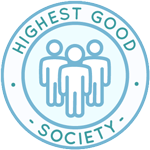 One Community is developing holistic human support webs throughh a Highest Good society approach to living that is founded on fulfilled living, the study of meeting human needs, Community, and making a difference in the world:
One Community is developing holistic human support webs throughh a Highest Good society approach to living that is founded on fulfilled living, the study of meeting human needs, Community, and making a difference in the world:
- Read the Highest Good society overview: Highest Good Society
- Learn about the model for fulfilled living and sharing within holistic human support webs: A Day in the Life
- Learn about the 4 economic models that support holistic human support webs: RBE | For-profit | Non-profit | Entrepreneurship
This week, the core team completed over 34 hours managing One Community’s volunteer-work review not included above, emails, social media accounts, web development, new bug identification and bug-fix integration for the Highest Good Network software, and interviewing and getting set up new volunteer team members. They also shot and incorporated the video above that talks about holistic human support webs and how holistic human support webs is a foundation of the bigger picture of everything One Community is doing. The picture below shows some of this work.
Arun Chandar Ganesan (Volunteer Data Analyst and SEO and Social Media Assistant) focused on improving webpage SEO by reviewing a large number of pages, including some that had previously been abandoned, and working on the assigned webpages. He also oversaw and coordinated the scheduling of posts on One Community’s social media channels, including Facebook, Instagram, and LinkedIn, for the subsequent months of the year. His work on social media helps One Community to broaden our reach and spread our message about holistic human support webs. The following images show his work for the week.
Jia Shu (UX Designer) collaborated with John on Phase 3 of the PRD, focusing on epics, user stories, tasks, and priorities. Additionally, Jia explored web and mobile design systems, using resources from Material Design, Android Developer, and Apple Developer websites. The team established a design system structure with six epics and user stories, finalizing tasks with John. Using Figma, they created basic layouts for each function, focusing on activity evaluation, FAQ, calendar-connected summaries, and reports on participation, resource use, and feedback. These efforts align with the One Community mission to build open-source holistic human support webs. The image below showcases some of their progress.
ADMINISTRATION TEAM
The Administration Team’s summary, covering their work administrating and managing most of One Community’s ongoing process for supporting holistic human support webs was managed by Sneka Vetriappan (Data Analyst) and includes Durgeshwari Naikwade (Data Analyst), Jessica Fairbanks (Administrative Assistant), Jim Zhang (Administrative Assistant), Kishan Sivakumar (Administative Assistant and Software Team Manager), Michael Juma (Administrative Assistant), Olawunmi “Ola” Ijisesan (Administrative and Management Support), Rachna Malav (Data Analyst), Ruiqi Liu (Administrative Assistant), Saumit Chinchkhandi (Software Engineer), T R Samarth Urs (Data Analyst), Vibhav Chimatapu (Data Analyst/Admin Assistant) and Zuqi Li (Administrative Assistant and Economic Analyst).
Durgeshwari scheduled interviews and updated the HGN Phase 3 table. Jessica prepared for Highest Good Food tasks, joined admin training, and handled weekly duties. Jim optimized 10 blogs for SEO and drafted an ESG proposal. Kishan worked on the weekly update blog and SEO.
Michael enhanced SEO parameters for weekly blogs, optimizing 10 previous blogs. Ola participated in training new admin team members, reviewed the PR team’s work, and ensured the accuracy of progress report sheets. Rachna supported the holistic human support webs team as she performed regular administrative duties, scheduled interviews, and worked on SEO pages. Ruiqi completed review processes and managed bio announcements while continuing work on benchmarking. Saumit did his part supporting the creation of holistic human support webs as he completed onboarding and action items, practiced admin procedures, and created web pages featuring team summaries. Samarth managed the PR review team, optimized blogs, and summarized their work in a blog post.
Vibhav reviewed PR team work, created group summaries, and continued SEO optimization efforts. Zuqi organized weekly summaries for the Graphic Design and Alpha Teams, reviewed admin updates, and updated blog justifications. One Community’s model for supporting holistic human support webs includes developing and maintaining a supportive administration team like this. You can see the work for the team in the image below.
GRAPHIC DESIGN TEAM
The Graphic Design Team’s summary was managed by Zuqi Li (Administrative Assistant and Economic Analyst) and included Ashlesha Navale (Graphic Designer), covering their work on graphic designs for holistic human support webs. This week, Ashlesha updated Treehouse Village book pages 36-39, uploaded the InDesign file, and created a PDF. She researched nature-based and themed images, designed nine social media images, and fixed older social media and food recipe images. See the work below.
HIGHEST GOOD NETWORK PROGRESS
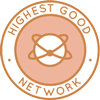 One Community is developing holistic human support webs through open source Highest Good Network® software that is a web-based application for collaboration, time tracking, and objective data collection. The purpose of the Highest Good Network is to provide software for internal operations and external cooperation. It is being designed for global use in support of the different countries and communities replicating the One Community sustainable village models and related components.
One Community is developing holistic human support webs through open source Highest Good Network® software that is a web-based application for collaboration, time tracking, and objective data collection. The purpose of the Highest Good Network is to provide software for internal operations and external cooperation. It is being designed for global use in support of the different countries and communities replicating the One Community sustainable village models and related components.
- Learn about our open source holistic human support webs collaboration and management software: The Highest Good Network
This week, the core team continued their work on the Highest Good Network PRs testing, confirming the fixed PRs. This week’s PRs included task visibility for all roles, owner approval of task changes, a timer fix on the WBS page, and a new “Search Projects By Person” feature. Admins can now delete specific time logs. The team also reported issues like missing Dark/Light mode icons and broken links in Team Weekly Summaries. Additionally, they reviewed and updated the HGN User’s Manual with corrections and improvements.The collage below shows some of their work.
ALPHA SOFTWARE DEVELOPMENT TEAM
The Alpha Team’s summary, covering their work on the Highest Good Network software was managed by Lin Khant Htel (Frontend Software Developer) and includes Anand Seshadri (Software Engineer) and Logeshwari Renu (Software Engineer). The Highest Good Network software tracks and manages holistic human support processes. This week, Lin completed unit testing for DashboardController functions (PR#965) and reviewed team Alpha’s weekly summaries. Logeshwari fixed an error message issue in “User Management” (PR#1026), resolving API role gaps. Anand developed a feature to track task hour changes, updated state management, and resolved merge conflicts in a PR for review link validation.View some of the team’s work in the collage below.
BADGES BUGS SOFTWARE DEVELOPMENT TEAM
The Badges Bugs Team’s summary overseeing advancements in the Highest Good Network software was managed by Summit Kaushal (Backend Software Developer) .The Highest Good Network software is how we’ll be managing and objectively measuring our process for holistic human support webs through our social architecture, construction, production, and maintenance processes. This week, Summit handled recruitment messages on Slack, responding to inquiries, declines, and interest from recruits. They reviewed a debugging video on a Postman issue, identified potential technical difficulties like internet connection problems, and worked on weekly tasks, documentation, and code reviews.View some of the team’s work in the collage below.
BINARY BRIGADE SOFTWARE DEVELOPMENT TEAM
The Binary Brigade Team’s summary overseeing advancements in the Highest Good Network software was managed by Min Sun (Software Engineer) and includes Aaryaneil Nimbalkar (Software Developer), Deepthi Kannan (Software Engineer), Huijie Liu (Software Engineer), Sai Sarath Kumar Alavakonda (Software Engineer), Sandhya Adavikolanu (Software Developer) and Sri Sudersan Thopey Ganesh (Software Engineer). The Highest Good Network software is how we’ll be managing and objectively measuring our process for holistic human support webs through our social architecture, construction, production, and maintenance processes.
This week, Aaryaneil resolved issues with the VolunteeringTimeTab unit tests, fixed console errors from unhandled API calls, and tested PRs for tableFilter.jsx, Projects.jsx, permissions management mobile optimization, dark mode button, and user profile last name error. Deepthi improved the SEND EMAILS page’s mobile responsiveness by updating Announcements.css and collaborated on the HGN Phase 1 Users Manual. Huijie focused on styling the role distribution pie chart and work distribution bar chart, exploring alternatives like Chart.js and Recharts, and worked on the anniversary celebration component.
Min optimized the backend API for user profile retrieval and task component loading, hosted the weekly meeting, approved PRs, and compiled a team summary. Sai clarified checkout issues with Diya, addressed changes in PR 2416, and fixed a new team addition issue with the “see all” toggle. Sandhya enhanced data accuracy and visualizations, adding a bar chart to the TotalOrgSummary component for task completion data. Sri created PR 2452 for the TeamStatsBarChart component, featuring responsive horizontal bar charts and custom labels to track volunteer changes. He also updated volunteer tabs and activities.
BLUE STEEL SOFTWARE DEVELOPMENT TEAM
The Blue Steel Team’s summary, presenting their work on the Highest Good Network software was managed by Jingyi Jia (Software Engineer, Team Manager), and includes Bhuvan Dama (Full stack Developer), Jay Srinivasan (Software Engineer), Parth Rasu Jangid (Software Developer), Ramakrishna Aruva (Software Engineer), Tzu Ning “Leo” Chueh (Software Engineer), and Vishavdeep Kaur (Full stack Developer). This week, Jay worked on unit tests for SameFolderTasks, improving coverage for fetch requests and component rendering. He also created a mock for testing the EditTaskModal and reviewed weekly summaries for Team Blue Steel. Bhuvan resolved merge conflicts in PR#2148, enhanced TableFilter.jsx, and expanded test cases. Ramakrishna developed a new method in the user profile controller and integrated backend API changes with the frontend.
Tzu Ning improved useEffect hooks to prevent data fetching with an undefined userId, added conditional rendering for a loading state, and finalized task functions, including save actions and button enablement. He also fixed a bug through a new pull request and resolved npm test failures, boosting system robustness. Vishavdeep tested eight pull requests across various projects, provided comments and approvals, and reviewed two additional pull requests. Parth wrote unit tests for the timeZoneAPIController.js and created PR#1027 for the backend HGNRest repository, also resolving conflicts in previous pull requests for merging. See below to view images of their work.
CODE CRAFTERS SOFTWARE DEVELOPMENT TEAM
The Code Crafters Team’s summary, covering their work on the Highest Good Network software, was managed by Ruiqi Liu (Administrative Assistant) and includes Carlos Gomez (Full-stack Software Developer), Weiyao Li (Software Engineer) and Xiaoyu Chen (Software Engineer). The Highest Good Network software streamlines holistic support management. Carlos optimized Redux in TotalOrgSummary, reset weekly hours in VolunteerHoursDistribution.jsx, and debugged VolunteerHoursStats.jsx. Weiyao developed the “add roles” feature with permissions while learning React and Redux. Xiaoyu enhanced the volunteer dashboard, rewrote permission functions, built a chart layout with Chart.js, and completed the getTaskAndProjectStats API call. See the Highest Good Society and Highest Good Network pages for more on how this relates to holistic human support webs. The collage below shows some of this work.
DEV DYNASTY SOFTWARE DEVELOPMENT TEAM
The Dev Dynasty Team’s summary, covering their work on the Highest Good Network software, was managed by Nahiyan Ahmed (Full Stack Software Developer) and includes Howie Miao (Software Engineer), Harsh Bodgal (Software Engineer). and Jatin Agrawal (Software Engineer). The Highest Good Network software helps manage and measure holistic human support webs across various processes. Nahiyan completed PR 2446, optimizing the permissions management page for mobile and tablet displays by redesigning pagination, adjusting font sizes, and ensuring responsive button sizes. He also addressed PR 2442, fixing issues with the dark mode button, including hover effects and font colors.
Howie transitioned from PR reviews to joining a development team to address bugs and work on website development after finishing up a couple more PR reviews. He shifted to bug searching on the user profile page, as suggested by Nahiyan. Jatin focused on bug fixes, working 20 hours on various PRs, including the bug on the weekly-voluntary summary frontend page. Harsh tackled an ongoing API issue, then shifted to developing a time period and comparison period selection dropdown, ensuring compatibility with existing systems and responsiveness. Additionally, he worked on integrating the dropdown with charts and APIs. The collage below shows some of this work.
EXPRESSERS SOFTWARE DEVELOPMENT TEAM
The Expressers Team’s summary, covering their work on the Highest Good Network software, was managed by Christy Guo (Software Engineer) and includes Jiayu Huang (Software Engineer), Kaushik Malikireddy (Full Stack Developer Intern). The Highest Good Network software is how we’ll manage and objectively measure our process for holistic human support webs through our social architecture, construction, production, and maintenance processes.
Christy focused on fixing the connections errors and unable to fetch data error for the backend implementation for Hour Task Visualization. She also created a local test branch to test those API endpoints for the Hour Task visualization module. She will be working on building the connection between the frontend and the backend routing to fetch project information and those related task information.
Jiayu contributed to the HGN Software Development project by resolving merge conflicts, fixing bugs, and updating pull requests. He added a sort button for modified members on the projects page and modified the backend to track changes in member assignments. Jiayu also addressed issues with an old pull request, suggested database changes for sorting recently edited items, and created new pull requests. Additionally, he implemented dark mode support and added a note prompt for lost time in the time log feature.
GIT-R-DONE SOFTWARE DEVELOPMENT TEAM
The Git-R-Done Team’s summary, covering their work on the Highest Good Network software, was managed Sushmitha Prathap (Software Developer) and includes Youyou Zhang (Software Developer). The Highest Good Network software is how we’ll be managing and objectively measuring our process for holistic human support webs across our social architecture, construction, production, and maintenance processes.
Youyou claimed a new task to fix a bug on the frontend UI. While working on it, she encountered a console error from the development branch unrelated to her code. She reported the issue on Slack and is awaiting a response. She furthered the creation of holistic human support webs as she then focused on reviewing pull requests, approving PR 2448, a unit test for the Project page, and requesting changes for PR 2442, which adds a button to switch between dark and light modes. See the Highest Good Society and Highest Good Network pages for more on how this relates to holistic human support webs. See the collage below for the team’s work this week.
MOONFALL SOFTWARE DEVELOPMENT TEAM
The Moonfall Team’s summary, covering their work on the Highest Good Network software was managed by Lu Wang (Software Engineer) and includes Abdelmounaim “Abdel” Lallouache (Software Developer), Jiadong Zhang (Volunteer Software Engineer) and Shrada Chellasamiand (Software Engineer). The Highest Good Network software helps manage and measure holistic human support webs across social architecture, construction, production, and maintenance processes. This week, Abdelmounaim fixed three bugs related to the home country option for new users created with the setup link. He addressed issues where new accounts showed up on the map without contributing 10 hours, deleted accounts’ locations remained visible, and the total number of countries included deleted accounts. Abdelmounaim created PR #1029 with the fixes for these issues.
Jiadong worked on enhancing the dashboard by replacing the badge system. He furthered the creation of holistic human support webs as he maintained open communication, addressing feedback on his PR promptly. By merging the main branch into his branch, Jiadong ensured any bug fixes were incorporated.
Lu worked on improving unit tests for the PeopleReport/components/PeopleTasksPieChart.jsx component by redesigning test cases for selector functions to better filter and process data. She resolved rendering and data binding issues, boosting performance and visual accuracy. Lu expanded test coverage, handling edge cases, state management, and asynchronous data. In addition, she contributed to holistic human support webs by managing her assistant team, writing weekly reports, reviewing teammates’ work, and collecting top project photos. This work supports adaptable solutions for holistic human support webs.
Shrada contributed to holistic human support webs by addressing high-priority UI issues on the PROJECTS PAGE for screen widths of 375px and up. She fixed several problems: centered the spinning circle that appeared with loaded projects, corrected misaligned arrows and margins at 991px and below, ensured the project search bar matched the table length, fixed padding issues on cards at 768px, and adjusted the search bar input size at 375px. Shrada developed, tested, and pushed the changes, creating a pull request with a recorded video. See the Highest Good Society and Highest Good Network pages for more on how this relates to holistic human support webs. See the collage below for the team’s work this week.
REACTONAUTS SOFTWARE DEVELOPMENT TEAM
The Reactonauts Team’s summary, covering their work on the Highest Good Network software was managed by Changhao Li (Software Engineer) and includes Dhairya Mehta (Software Engineer), Diya Wadhwani (Software Developer), Hetvi Patel (Software Engineer), Peterson Rodrigues dos Santos (Full-Stack MERN Stack Developer), Shiwani Rajagopalan (Software Engineer), Vijeth Venkatesha (Full Stack Developer) and Yash Agrawal (Software Engineer). This week, Changhao contributed to the Highest Good Network software by focusing on unit test development for `timeentry.jsx’, addressing issues and identifying edge cases. He also monitored time logs and task progress, supporting the creation of holistic human support webs through effective collaboration and technical development.
Dhairya furthered the creation of holistic human support webs as she focused on resolving the “Fix Projects find user function” task, demonstrating problem-solving skills by identifying and addressing user discovery issues within the projects section. He implemented a sort and search function to optimize user assignment processes, thereby enhancing operational efficiency and user experience.
Diya addressed a bug related to updating last names to initials, raising PRs 2440 and 1024 for the fix. She also implemented changes for manually assigning blue squares, adding flags for manual assignment and user identification. Diya contributed to holistic human support webs by reviewing multiple PRs, including unit testing for user profiles, task deactivation, WBS task button adjustments, and time off requests. She reviewed issues with the volunteer summary dashboard and permissions for adding roles. Additionally, Diya created a Figma mockup and is awaiting confirmation from Jae on UI changes for the blue square bug.
Hetvi put her efforts into setting up live server FTP, backing up data, and migrating flow code for data entries. She did her part in support of holistic human support webs as she overcame challenges with provider knowledge, ensuring secure setup and migration of custom post type, taxonomy, meta field, and filter codes without functionality impact. Addressing a warning in functions.php on the staging site, Hetvi proceeded to create options taxonomy for pages across 15 search engines on the live server.
Peterson did his part to support the creation of holistic human support webs as he fixed a bug on the time log page. The issue occurred because the user ID was not being sent to the time log page via the URL, resulting in an error when making requests to retrieve user information and causing the loading indicator to remain indefinitely. He resolved the bug by implementing a feature that ensures the user ID is sent through the URL every time the time log page is accessed.
Shiwani advanced holistic human support webs by testing the UserProfileModal and Projects components. She validated the Resize button, link updates, and blue square summaries for UserProfileModal. In Projects, she tested the AddProject button, modal title, and archiving functionality. Shiwani submitted PRs #2453 and #2448 for her tests. Meanwhile, the application was enhanced to dynamically display database-driven listings, with new APIs for deleting listings integrated with GraphQL, custom React code for re-renders, and routing for redirects. Bugs were fixed, leading to the creation of a Listings page for viewing prices and placing bids.
Vijeth fixed some bugs in the Docker environment as part of supporting holistic human support webs, but noted that some APIs still need resolution. He tested Docker in the local environment to ensure it worked as expected. He implemented Docker in the front-end repository of HGN software, confirmed its functionality, and identified potential future bugs for testing. While working on Docker for the front-end repository, he encountered a jwt-decode error that requires fixing before proceeding further. Additionally, he addressed an issue related to port conflicts during Docker testing.
Yash contributed to holistic human support webs by making the application dynamic. He enabled database-driven listings, eliminating hardcoding, and developed APIs for deleting listings, including a GraphQL API. Yash integrated these APIs with the frontend, customized React code for re-renders, implemented routing for redirects, and tested the app across various viewports and use cases. Additionally, he developed a Listing page where buyers could view prices and place bids. See the Highest Good Society and Highest Good Network pages for more on how this relates to holistic human support webs. See the collage below for the team’s work this week.
SKYE SOFTWARE DEVELOPMENT TEAM
The Skye Team’s summary, covering their work on the Highest Good Network software was managed by Luis Arevalo (Software Engineer) and includes Abi Liu (Software Engineer), Gowtham Dongari (Software Engineer), Hui Kong (Software Engineer) and Mengtian Chen (Software Engineer). The Highest Good Network software is key to managing and measuring our process for holistic human support webs. This week, Abi focused on troubleshooting issues with data aggregation in the time entries MongoDB collection, resolving queries that returned empty or null results for time worked data. He also continued working on integration tests for the map location controller, completing error handling for 404 and 401 cases.
Gowtham contributed to the HGN Software Development project by addressing key functionality and stability issues. He worked on a hotfix to resolve the problem of loading the wrong time log when opening multiple entries, ensuring each log is correctly associated with the intended user. He also fixed a bug that caused a null value in the user ID display within the dashboard component. Gowtham reviewed several Pull Requests (#1007, #1021, #981, #976), providing detailed feedback for improvements. Additionally, he created a video walkthrough and documented tasks to streamline onboarding and ensure clear development records.
Hui reviewed Pull Requests 2446 and 2448, examined the recent bugs in the ‘HGN Phase I Bugs and Needed Functionalities,’ and selected a team to join. Hui also contacted the unit testing team and practiced tests for PR 803, PR 804, and PR 805.
Luis continued testing the inventoryController, completing tests for the getAllInvInProject function and initiating tests for the postInvInProject function. He encountered issues with the post method returning a 500 error when updating an inventory item.
Mengtian focused on developing and enhancing unit tests for the GoogleDocIcon component. The testing tasks ensured the component behaves as expected: opening a new window when a valid link is provided, showing an error toast if no link is present, and toggling the inactive class depending on the link’s presence. Additionally, tests confirmed that the handleGoogleDocClick function responds to Enter and Space key presses. See the Highest Good Society and Highest Good Network pages for more on how this relates to holistic human support webs. See the collage below for the team’s work this week.
SOFTWARE PR REVIEW TEAM A-L
The PR Review Team’s summaries for team members’ names starting with A-L and covering their work on the Highest Good Network software was managed by Vibhav Chimatapu (Data Analyst/Admin Assistant). The Highest Good Network software is a foundation of what we’ll be using to measure our results for holistic human support webs. This week’s active members of this team were: Angela Cheng (Full Stack Developer), Anuj Vakil (Software Engineer), Carl Bebli (Software Engineer), Gaurav Setty (Software Engineer), Jinxiong You (Software Engineer), Keshav Daga (Software Engineer), Kurtis Ivey (Software Engineer), and Sahithi Dhulipala (Software Engineer). They reviewed all the Highest Good Network PRs shared in this week’s update. The collage below shows a compilation of the work from this team.
SOFTWARE PR REVIEW TEAM M-Z
The PR Review Team’s summary for team members’ names with M-Z and was managed by Olawunmi “Ola” Ijisesan (Administrative and Management Support), and Samarth Urs (Administrative Assistant and Data Analyst). Active members were: Nandini Yelmela (Software Engineer), Nathan Hoffman (Software Engineer), Niketha Anand (Software Engineer), Nikhil Pittala (Volunteer Software Engineer), Olga Yudkin (Software Engineer), Ramya Ramasamy (Full Stack Developer), Rishitha Kondabolu (Software Developer), Rohith Gummadi (Software Engineer), Sailavanya Narthu (Software Engineer), Shadhrush Swaroop (Full Stack Software Engineer), Shengwei “Peter” Peng (Software Engineer), Vigneshwar Muriki (Software Engineer), Vijay Anand Pandian (Full Stack Software Engineer), Xiao Wang (Software Engineer), Yiyun Tan (Software Engineer) and Zijie Yu (Software Engineer). They reviewed the PRs shared in this week’s update. See image below.
AND WE PRODUCED THIS WEEKLY UPDATES BLOG – CLICK HERE TO SUBSCRIBE
FOLLOW ONE COMMUNITY’S PROGRESS (click icons for our pages)
INVESTOR PAGES
GET INVOLVED
DONATE | WAYS ANYONE CAN HELP | MEMBERSHIP
CLICK HERE FOR ALL PAST UPDATES
 One Community
One Community